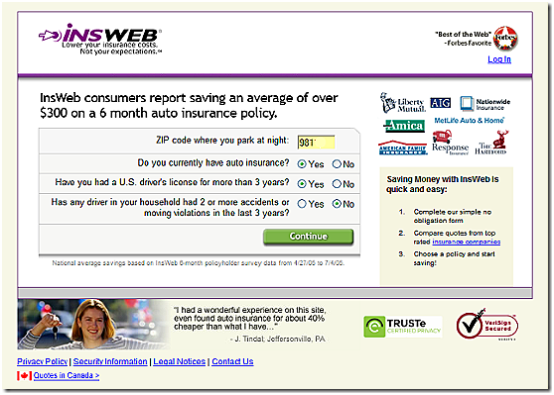The secret to better offerings and higher sales is your CUSTOMER… but why? [Tuesday: Return Driven Strategy]

Miles Everson’s The Business Builder Daily speaks to the heart of what great marketers, business leaders, and other professionals need to succeed in advertising, communications, managing their investments, career strategy, and more.
A Note from Miles Everson:
Welcome to this week’s edition of “Return Driven Strategy!”
As someone with over 30 years of experience in the business and consulting industry, I’ve found the Return Driven Strategy (RDS) framework to be a game-changer in managing my team effectively.
That’s why every Tuesday, we bring you articles about RDS to empower you in today’s ever-changing work landscape.
Today, let’s delve deeper into the 8th tenet of RDS: Mapping and redesigning processes.
Read on to discover the importance of understanding your customers’ perspective when mapping and redesigning your business operations.
Miles Everson
CEO, MBO Partners
Chairman of the Advisory Board, The I Institute
Return Driven Strategy
In a past “Return Driven Strategy” article, we discussed the 8th tenet of RDS, specifically the WHEN and WHY of redesigning business processes.
There, we emphasized that redesigns shouldn’t be made blindly and without purpose. For example: Your company could have the best process in creating buggy whips, but what use is it when the need for such an offering doesn’t exist?
Improving offerings that no one needs would just be a waste of company time and resources. If you want to ethically maximize wealth, you must create products that actually meet society’s unmet needs.
This leads us to today’s topic: How to redesign business processes with the customer in mind!

Photo from Unsplash
Redesigning the purchasing process usually starts with identifying bottlenecks in sales. How do you pinpoint where the bottleneck begins?
The answer is simple: Put yourself in your customers’ shoes.
Let’s say you are looking for home exercise equipment at a particular store. Which of the two scenarios would you prefer?
Spending time explaining your needs to a salesperson, only for him/her to try and sell you more items and add-ons than what you wanted?
Or…
Having control over the buying process and direct access to the offerings you need?
More often than not, most customers would prefer the latter scenario. This is why most buyers anxiously respond, “I’m just looking” when a salesperson approaches them, and end up not buying anything at all. This is one of the common causes of a sales bottleneck.
An example of a successful redesign of this sales process is that of Dell. Instead of allowing customers to deal with salespeople in retail stores, the company opted to sell directly to its target market. This became a valuable part of Dell’s offering, giving customers the convenience of directly buying and customizing their devices.

Photo from Unsplash
It’s no wonder Dell’s customers found value with its offerings!
Let’s take a look at other companies that tried to get into the customer perspective in redesigning business processes…
INSWEB is a firm that attempted to be a one-stop shop on the Internet for all kinds of insurance policies, including for homes, cars, jewelries, and watches.

Photo from Finovate
Sounds convenient for customers, right?
Yet, from 1998 to 2007, the company’s earning power levels never reached above zero. Why weren’t insurance buyers flocking to INSWEB?
Here’s the thing: Although the company pioneered being a one-stop shop for insurance policies, what it failed to grasp is that customers don’t usually buy, or even think of, insurance policies alone.
The need for car insurance only arises when a customer buys a car. The same goes for house insurance and other valuable things. In other words, the need for an insurance policy is usually met side-by-side with the purchase of the product that needs to be insured.
Sure, INSWEB may have redesigned its sales process for insurance policies, but the need for its offering simply did not exist. The company’s insight into insurance customers’ perspective was lacking.
If careful research of the target market was done, resources would not have been wasted on producing an offering no one wants. Changes for the benefit of the customer doesn’t always work out if the need for the offering just isn’t there.
Meanwhile, the need for a convenient shopping experience always exists for retail customers. Redesigning towards this end is what ultimately made Walmart’s sales process stand out.

Photo from Unsplash
Instead of having the widest selection of products possible, the company studied customer buying patterns, and focused on having the products that were most in demand.
With the firm’s competitive pricing and “most popular” selection of products, customers didn’t need to hop back in their car and look for options elsewhere. As a result, shopping at Walmart saved people time and money.
Also, by studying the totality of customer experience to accurately identify and meet needs, Walmart was able to redesign towards a convenient sales experience with competitive pricing. The firm was also able to reduce costs and save money by having a smaller inventory compared to competitors.
—
Generally speaking, mapping and redesigning can create great changes in a business. However, don’t forget who you’re mapping and redesigning your business processes for!
According to Professor Joel Litman and Dr. Mark L. Frigo in the book, “Driven”:
“[A map] can be helpful as a representation of the business, but care must be taken to question it regularly, challenging assumptions from various perspectives.”
Notable self-development author and speaker Dr. Wayne Dyer also said:
“When you change the way you look at things, the things you look at change.”
Both these statements mean great opportunities for mapping and improving your business can come from putting yourself in your customers’ shoes. Through this, you’ll be able to focus not just on your offerings, but also on other aspects such as the sales experience, customer convenience, inventory management, etc.
We hope you learned lots of useful business insights from today’s topic!
Take note: Always keep customers and the entirety of your offering in perspective. After all, better fulfillment of unmet needs through all aspects of your offering is what will make higher returns possible.
Also, if you’re looking to gain a better understanding of Return Driven Strategy and Career Driven Strategy, we highly recommend checking out “Driven” by Professor Litman and Dr. Frigo.
Click here to get your copy and learn how this framework can help you in your business strategies and ultimately, in ethically maximizing wealth for your firm.
—
In line with MBO Partners’ continuous dedication to supporting you and your business, we want to notify you about an opportunity to access potential tax credits of up to USD 32,200.
The American Rescue Plan Act of 2021 provides specific provisions for self-employed individuals, known as the Self Employed Tax Credit (SETC), for which nearly everyone with Schedule C income qualifies. This acknowledges the unique challenges faced by those who work independently especially during times of illness, caregiving responsibilities, quarantine, and other circumstances.
There are two criteria you must meet to qualify for receiving the tax credit of up to USD 32,200. Click here to see how you can obtain the SETC to know more about this.
Act NOW! This credit will expire on April 15, 2024, so we encourage you to submit early to see if your business qualifies. Also, if you know others who may qualify for the SETC, you may share these details with them.
(This article is from The Business Builder Daily, a newsletter by The I Institute in collaboration with MBO Partners.)
About The Dynamic Marketing Communiqué’s
“Tuesdays: Return Driven Strategy”
In the book, “Driven,” authors Professor Joel Litman and Dr. Mark L. Frigo said that the goal of every long-term successful business strategy should incorporate the combined necessity of “making the world a better place” and “getting wealthy.”
That is why they created Return Driven Strategy and Career Driven Strategy―frameworks that were built to help leaders and professionals plan and evaluate businesses so they can also help others achieve their organizational goals and career goals.
The frameworks describe the plans and actions that drive returns for anyone in an organization such as independent contractors, marketers, brand managers, communicators, and other people in any field. These actions lead to the creation of wealth and value for customers, employees, shareholders, and the society.
Every Tuesday, we’ll highlight case studies, business strategies, tips, and insights related to Return Driven Strategy and Career Driven Strategy.
In planning, building, or managing brands and businesses, these strategies, case studies, and guidelines will help you choose what specific actions to take and when to take them.
Hope you found this week’s insights interesting and helpful.
Stay tuned for next Tuesday’s “Return Driven Strategy!”
Cheers,
Kyle Yu
Head of Marketing
Valens Dynamic Marketing Capabilities
Powered by Valens Research
www.valens-research.com




